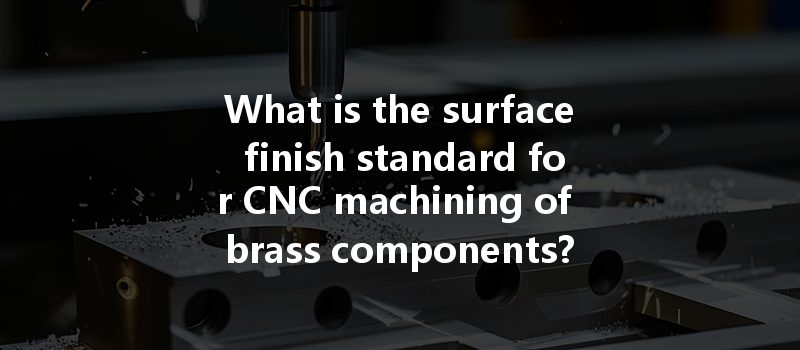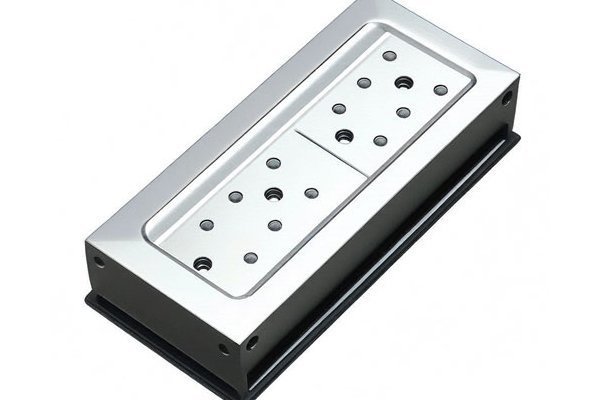Did you know that the surface finish of a manufactured part can significantly affect its performance, durability, and aesthetic appeal? According to a study by the American Society of Mechanical Engineers (ASME), approximately 80% of manufacturing defects can be traced back to inadequate surface finishes. This startling statistic highlights the importance of understanding and implementing appropriate surface finish standards in CNC machining—especially when it comes to materials like brass.
In this comprehensive blog post, we will dive deep into the nuances of surface finish standards for CNC machining of brass components. We will explore what these standards entail, the various methodologies for achieving them, potential challenges faced in the process, and best practices to ensure high-quality outcomes. By the end, you’ll grasp not only the standards but also why they matter in the broader context of manufacturing and quality assurance.
Understanding CNC Machining and its Importance in Manufacturing
CNC (Computer Numerical Control) machining is a manufacturing process that uses computer-controlled machines to create precise parts and components from a wide array of materials. Brass, an alloy of copper and zinc, is a popular choice in various industries due to its excellent machinability, corrosion resistance, and aesthetic properties. However, achieving the desired surface finish when machining brass can be challenging.
Brass components find usage in diverse applications, including plumbing, automotive, and electronic components. The surface finish of these parts affects not only their performance but also their appearance and durability. Thus, adhering to surface finish standards is critical for manufacturers.
What is a Surface Finish Standard?
Surface finish standards refer to a set of criteria that dictate the required texture, smoothness, and overall quality of a part’s exterior. These standards can influence various attributes, including friction, wear resistance, and the ability to hold coatings or platings.
Commonly referenced standards include:
When it comes to brass CNC machining, the surface finish standard is often tested and validated using these methods to ensure parts perform as intended.
Types of Surface Finishes
Detailed Solution to Achieve Desired Surface Finish
Step 1: Material Selection
Choosing the right grade of brass is the first step in ensuring a good surface finish. Different grades possess varying machinability characteristics. For instance, free-cutting brass (such as C36000) is designed for excellent machining performance, thus yielding a better surface finish when CNC processes are employed.
Step 2: CNC Machining Parameters
Machining parameters play a vital role in achieving the desired surface finish:

Step 3: Tool Selection and Maintenance
Using sharp tools is critical in CNC machining. Dull or worn tools lead to poor surface finishes and can affect dimensional accuracy. Regular maintenance schedules should be implemented to ensure that tools remain in peak condition.
Step 4: Post-Processing Techniques
Once the machining process is complete, consider the application of post-processing techniques.
Challenges in Achieving Desired Surface Finish
Achieving the ideal surface finish in CNC machining of brass can be fraught with challenges:
Best Practices for Ensuring Quality Surface Finishes
In summary, understanding and adhering to surface finish standards is crucial in the CNC machining of brass components. From compatible material selection to precise machining parameters, each facet plays a role in achieving a desired finish that not only meets industry specifications but also ensures longevity and performance.
This blog provided a detailed insight into the complexities and importance of surface finishes in CNC machining, emphasizing that quality assurance must be an ongoing commitment in the manufacturing process. By embracing best practices and keeping abreast of technological advancements, manufacturers can ensure optimal outcomes not just for brass but for all materials.
This topic is imperative for professionals in the engineering and machining sectors. The success of projects often hinges on the knowledge and implementation of surface finish standards. Remember, a well-finished part is not just a matter of aesthetics; it’s often a matter of safety and performance. Investing in quality machining processes pays dividends in the long term, reinforcing the necessity of surface finish standards in CNC machining.






